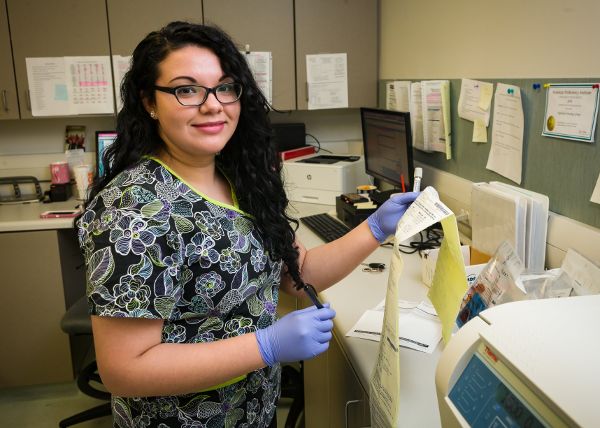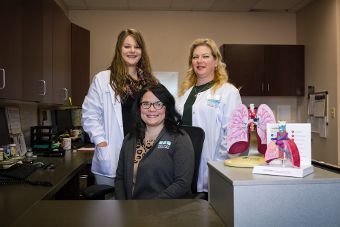Overview
Leukemia is a cancer of the early-forming blood cells in the body. Early blood-forming tissue can include bone marrow, the sponge like material inside most bones. Often, leukemia is a cancer of the white blood cells, but some types of leukemia can start in other blood cell types. Leukemia can be fast growing or slow growing. There are different types of leukemia that have different treatment options and outlooks.
Types of Leukemia
- Acute Lymphocytic Leukemia (ALL): most prevalent during childhood and early adulthood, but can be found in adults.
- Acute Myeloid Leukemia (AML): occurs most often in adults
- Chronic Lymphocytic Leukemia (CLL): most commonly found in people between the ages of 40 and 70.
- Chronic Myeloid Leukemia (CML): most commonly found in people between the ages of 40 and 70.
In acute leukemia, the bone marrow cells cannot mature properly. The leukemia cells continue to reproduce and build in the body. Without treatment, most people with acute leukemia would only live a few months. Some types of acute leukemia respond well to treatment, and many patients can be cured.
In chronic leukemia, cells mature partly but not 100%. These cells can look close to normal, but generally do not fight infection as well as normal white blood cells can. These cells can also live longer, and crowd out healthy cells. Chronic leukemias progress over a longer period of time, most people can live many years with it. Chronic leukemias are generally harder to cure than acute leukemias.
According the the American Cancer Society, roughly 43,000 people in the US are diagnosed with cancer each year. This includes 15000 cases of CLL, 13500 cases of AML, 6000 cases of ALL, and 5000 cases of CML.
The different types of leukemia are grouped by the type of cell affected in the body and the rate of that call growth.
Symptoms
- Quite often, leukemia does not have symptoms early on. Symptoms of leukemia vary depending on type of leukemia and person. Symptoms of leukemia may include:
- Constant feeling of fatigue
- Loss of appetite, unintentional weight loss
- Easy bruising or bleeding
- Unexplained nosebleeds
- Shortness of breath
- Petechiae (small spots of red under the skin caused by bleeding)
- Swollen lymph glands
- Anemia
- Night sweats
- Bone or joint pain
- Persistent infections
- Unexplained fever
It is important to note that these symptoms may not always mean you have leukemia. Discuss these symptoms with your doctor.
Risk Factors
For each type of leukemia, there are many different risk factors. To learn more about specific risk factors for leukemia, visit the links below.
- Radiation Exposure
- Certain Chemical Exposures
- Certain Viral Infections
- Inherited syndromes
- Down syndrome
- Klinefelter syndrome
- Fanconi anemia
- Bloom syndrome
- Ataxia-telangiectasia
- Neurofibromatosis
- Race/Ethnicity
- Gender
- Smoking
- Chemical Exposure
- Chemotherapy Drugs
- Radiation Exposure
- Blood disorders such as polycythemia vera, essential thrombocythemia, and idiopathic myelofibrosis.
- Genetic syndromes
- Fanconi anemia
- Bloom syndrome
- Diamond-Blackfan anemia
- Schwachman-Diamond syndrome
- Li-Fraumeni syndrome
- Neurofibromatosis type 1
- Severe congenital neutropenia
- Trisomy 8
- Down Syndrome
- Older Age
- Male Gender
- Age
- Exposure to certain chemicals
- Family history
- Gender
- Race/Ethnicity
- Radiation Exposure
- Age
- Gender
Prevention
At the time, ways to prevent leukemia are not known.
Diagnosis
Precise diagnosis of leukemia is essential to effective treatment. Certain signs and symptoms can suggest that someone may have leukemia, but tests are needed to confirm the diagnosis. Results of blood and bone marrow tests, including bone marrow aspiration and biopsy are required to successfully diagnose leukemia.
Treatment
There are different treatment options for each different types of leukemia. Treatment options include
- Chemotherapy
- Targeted therapy
- Stem cell transplants
- Surgery







